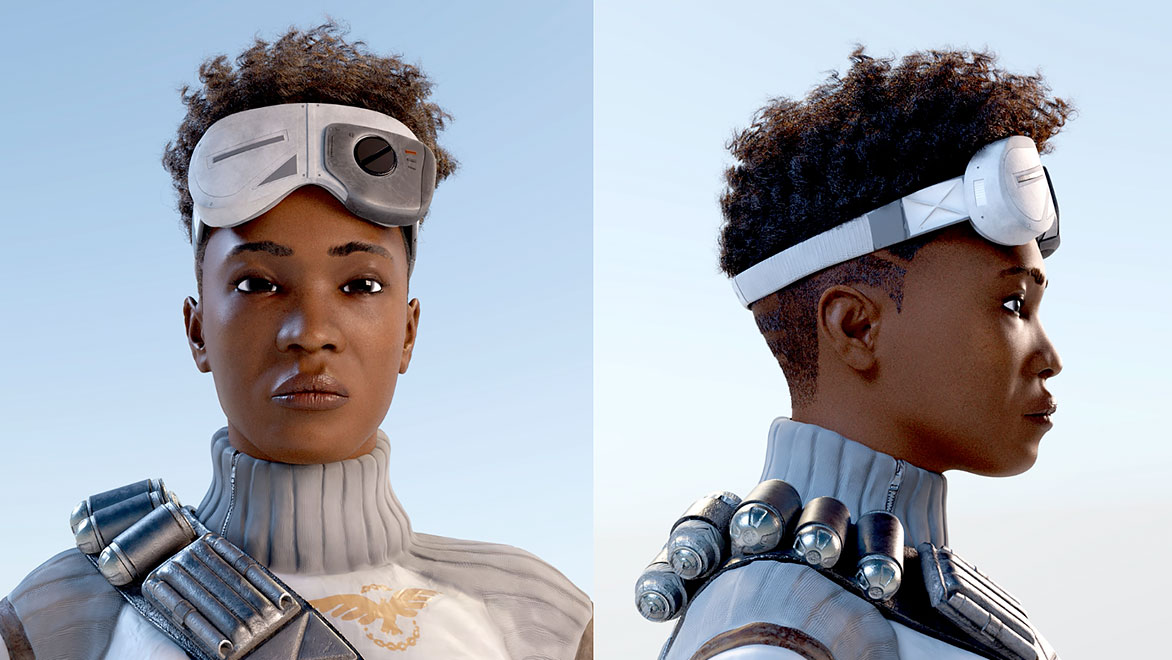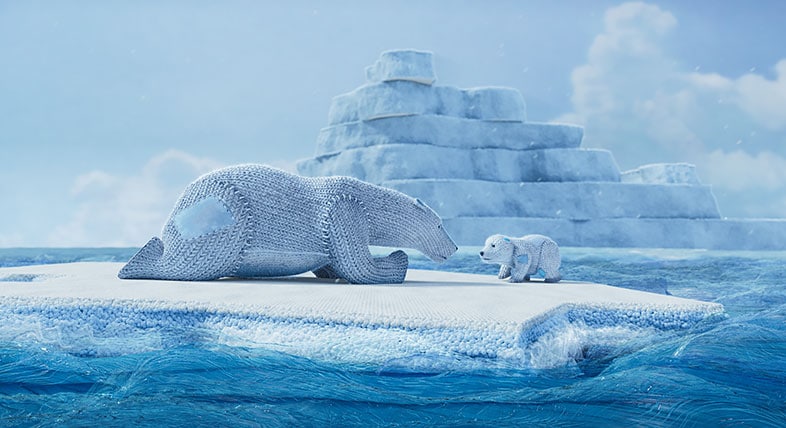& Construction

Integrated BIM tools, including Revit, AutoCAD, and Civil 3D
& Manufacturing

Professional CAD/CAM tools built on Inventor and AutoCAD
Image courtesy of Amaru Zeas
With an appetite for high-quality animated content soaring and timelines getting tighter, studios need powerful 3D animation tools and workflows to scale efficiently and keep up with demand. Autodesk solutions can help address these challenges.
Whether you’re after a stylized or hyper-realistic look, feature-rich tools and workflows can help you bring your animated content to life. From hair, fur, and skin to intricate environments, add the finest details to characters and scenes, and deliver high-quality work that keeps clients coming back.
Image courtesy of Gal Yosef
The creative process is highly iterative. You may review an animated scene, character, or asset dozens of times before you decide it’s done. Powerful 3D animation workflows allow you to iterate faster, pinpoint where to make changes in real time, and avoid breaking creative flow.
Image courtesy of Rashed Abdullah
From modeling environments to creating CG characters with realistic facial expressions and movement, an optimal user experience can have a huge impact on productivity. Artist-friendly and intuitive 3D modeling, animation, and rendering workflows help you manage your most complex characters and scenes with ease.
Image courtesy of Hamid Reza Abbasi
Pipelines sit at the heart of a studio’s success. A high performing 3D animation pipeline allows you to quickly optimize resources, identify gaps, and adapt production schedules and plans in real time. With a professional production management tool in place, you remove bottlenecks, streamline work processes, and improve communication flow between teams.
Image courtesy of Manuel Vendramin
Explore the phases of the 3D animation pipeline—from character and environment creation to final lighting and rendering.
Add final touches such as lighting, shading, and textures to your animation.
Manage animation projects smoothly, no matter how many teams, artists, or assets are involved.
Scale your studio’s rendering and simulation capabilities, while equipping artists with powerful modeling and animation tools
We are producing an epic 3D animated short called Mkali's Mission using Maya, 3ds Max, Arnold, Mudbox, and Flow Production Tracking (formerly ShotGrid). To bring the project to life, we hired freelance artists from across the globe for modeling, rigging, animation, visual effects, look development, and rendering.
Discover how our customers use Autodesk 3D animation software to create their projects.
BLOG
The team behind Visual Effects Society Student Award winning animated short, Migrants, share a break-down of their technique.
Image courtesy of the Migrants team
BLOG
Learn about the making of Mila, an animated short on the harsh realities of war, created by an entirely remote team of artists.
Image courtesy of Cinzia Angelini
BLOG
An iconic character in Norwegian pop culture, Qvisten took on the challenging feat of re-creating Captain Sabertooth for a new medium.
Image courtesy of Qvisten Animation
Learn more about 3D animation software from users’ top frequently asked questions.
3D animation uses computer graphics to make objects look like they’re moving in 3-dimensional space. Artists use 3D modeling software to build the objects. Next comes rigging, a virtual representation of an object or character’s skeleton. Animators pose the rig at strategic points so it appears to move. Newer methods of animation involve motion capture, which records an actor’s live movements for digital animation.
The most essential skills for making 3D animation are the comprehensive skills needed for animation software such as Maya or 3ds Max. These skills include creating 3D models, textures, lighting, other visual effects, and the animation itself through keyframing and/or motion capture.
There are other artistic and soft skills that will also help. Understanding the principles of animation in general—like timing, spacing, anticipation, and squash-and-stretch—will apply to 3D animation specifically, as will a knack for drawing, visual composition, color, and design. Attention to detail and soft skills like problem solving and good team communication are also important.
Creating a 3D animation takes a considerable amount of time, as well as skills and organization. The specific time it takes for 3D animation depends on the animation’s complexity and required detail, the number and experience level of contributors, the length of the animation, and the specific hardware and software technologies.
A very simple 3D animation may take only a few hours, or it could take several days to create a 30-second clip. Popular feature-length 3D animated movies almost universally require a large team and multiple years to produce.
Yes, 3D animation can be and quite frequently is used in VR experiences. 3D animations help build out the immersive and interactive environments of VR. Their ability to represent hyper-realistic surroundings with life-like textures, physics, lighting, etc. can make VR worlds convincing to the user.
However, 3D animations intended specifically for VR use need to factor in concerns like user interactivity, potential motion sickness, and so on. Those concerns contribute to making 3D animations for VR even more complicated to create than 3D animations for traditional screens.
Autodesk offers a complete suite of tools for creating high-quality animated content.
Autodesk software excels at making collaboration on 3D animation projects more efficient. The Media & Entertainment Collection includes all the tools necessary to build a powerful and scalable 3D animation pipeline. Add Flow Production Tracking (formerly ShotGrid) production management software to simplify animation reviews and project management and unify geographically dispersed teams.
Autodesk software drives efficiency in 3D animation workflows. From 3ds Max and Maya for modeling and animation to Arnold for rendering and Flow Production Tracking (formerly ShotGrid) for production management, Autodesk software streamlines the entire process from asset creation through final output. Recent updates to both 3ds Max and Maya have focused on helping animators work more efficiently. For example, cached playback in Maya drastically increases the speed of animation playback by letting you evaluate iterations of animation right in the viewport, rather than producing multiple playblasts. Arnold is the default renderer in both 3ds Max and Maya, allowing you to see high-quality previews of animations and iterate changes fast.
3ds Max and Maya are both used by creative studios around the world for animation, modeling, visual effects, and rendering. 3ds Max offers a robust toolset for modeling, intuitive texturing and shading, and high-quality rendering, while Maya offers powerful tools for character creation, lifelike animation, and detailed simulations.
Read more about the differences between 3ds Max and Maya.
Motion capture is the process where actors’ physical movements are captured and then recreated on digital character models. This allows actors to give realistic movement to CG creatures.
You can generate motion capture data from a live actor and import it into MotionBuilder. MotionBuilder provides animators and directors with an interactive environment for fine-tuning character movement.
Rokoko’s Motion Library is now also a native plugin in Maya, providing access to thousands of affordable, high-quality character animations from the world’s top motion capture studios. The plugin allows you to search, preview, and purchase motion assets natively, right in Maya.








